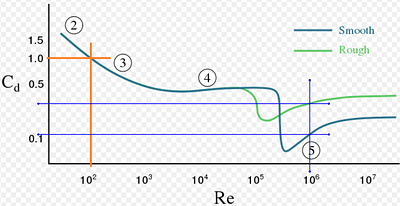thanks
The STL is consisting of a single surface so snappyHexMesh is unable to create any boundary layers; that’s the issue. You need to split the model either manually in your CAD software or automatically split the STL by angle within SimScale.
This also explains the yPlus images you’ve been showing. As there are no constant height layers, only snapped hexas, you are getting those unconsistent values.
by split it in the cad do you just mean a different object? also how do i split per angle in simscale?
scratch that figured it out, whats the best way to edge split my mesh, by angle or manually by some other means?
If “by angle” doesn’t work, you can use any other tool of choice.
I would place the wheels in a different patch so that you can apply rotation to them. If you are not able to do so, I’ll try this weekend.
the software im using is blender, i know its not ideal for this application but is it just the case of splitting parts into a different object?
In your case the most convenient way would be to save, e.g., each wheel as a different STL. Then, you’ll have to merge each file into a single STL, for which you may follow this Formula Student workshop from SimScale.
I forked your project a couple months ago, and there I split you model. You can check it here:
I also found that the automatic mesh (back then) didn’t create boundary layers for the half-model. You may fork the project and use the manual mesh for your simulation and see how it goes.
Hi guys,
I was playing around a bit this weekend and there’s something I found:
I don’t know wether it is a wise thing to do but I found that you can use Slip walls instead of Pressure outlet boundary condition in simple cases. I mean in my current project where I simulate flow around a sphere (https://www.simscale.com/workbench?publiclink=ae4d6967-4840-4f82-a1a3-a38b0aa8b052) I had a setup with 1 inlet, 1 outlet, 4 slip walls and 1 inlet, 5 slip walls as well. The results and the runtime were identical in each cases.
These are my findings regarding to this topic:
-With Hex-dominant automatic mesh generation the drag force is:
- accurate (37% error with moderate, 13% with very fine mesh) at Re=10^2 (laminar) flow
- around twice as much as calculated at Re=10^6 (turbulent) flow
-With manual mesh (by trying to implement similar approach like @AsadAli used in the Parachute project)
- around twice as much as calculated at Re=10^2 (laminar) flow
- accurate (32% error with moderate mesh) at Re=10^6 (turbulent) flow
(The settings are identical only the velocity was changed from 0.00155 m/s (laminar) to 155m/s (turbulent))
@pfernandez; since my model is only a one-surface part I experimented with a split model based on your suggestion. The funny thing is that in the laminar case I expect for the drag force:
1.14e-6N
And with the split model I got:
7.17e-7N
In this case it is not twice the value but around half. ![]()
So with all this information this phenomenon gets more and more interesting for me. Although I tried I couldn’t find out what went wrong what should be done differently.
If some “more-experienced-than-me” CFD guy would review this topic I’m sure it’d be useful for all of us.
And for sure I’ll also investigate it further. ![]()
Best regards,
János
Hi János,
You have to add viscous and pressure forces to get total drag force.
So, in your case you would get a total drag of 1.463e-6 N.
By disabling turbulence, I got a drag value of 1.328e-6 N with your mesh.
Cheers.
Hi Fernandez,
that was also my idea when I read about drag force on Wikipedia: “The aerodynamic forces on a body come primarily from differences in pressure and viscous shearing stresses. Thereby, the drag force on a body could be divided into two components, namely frictional drag (viscous drag) and pressure drag (form drag).”
[source: Drag coefficient - Wikipedia]
Then I found this video which explains how to extract drag and lift in ParaView: https://www.youtube.com/watch?v=J944HOj_4b0
It was a bit confusing because here the viscous force is not taken into account. So I only calculated with the pressure force.
Now I propose that it is only neglected because at turbulent flow the viscous force is much smaller. But in our case -at this very low speed- it is significant.
So this split-model technique is really the way to go!
To prove it I checked the turbulent flow (Re=10^6) around sphere.
I expected drag coefficient of around 0.15 but I got 0.37 instead. Then I checked the graph of Cd in function of Reynolds number:
As you can see, the Cd for the rough sphere is just around 0.37!
With finer mesh and more computational effort I’m sure that the result would converge to the smooth’s values but I’m really satisfied with it!
So thank you Fernandez for the tips I learnt a lot! ![]()
Additionally: how did you know about this trick with splitting the surface? Is there any written documentation about it somewhere? When is it necessary and what is the best practice to split your model in CFD?
Best regards!
